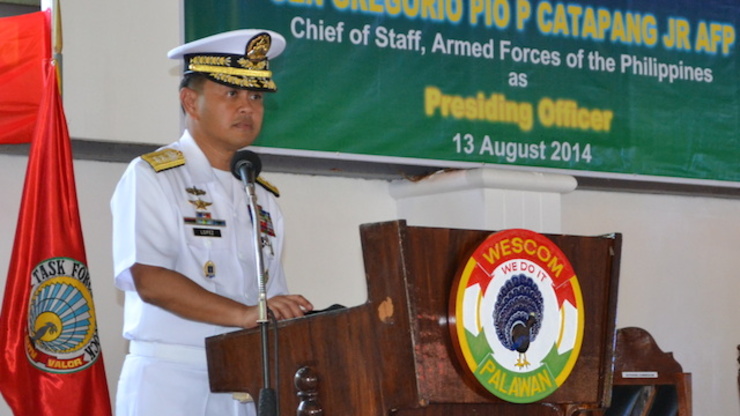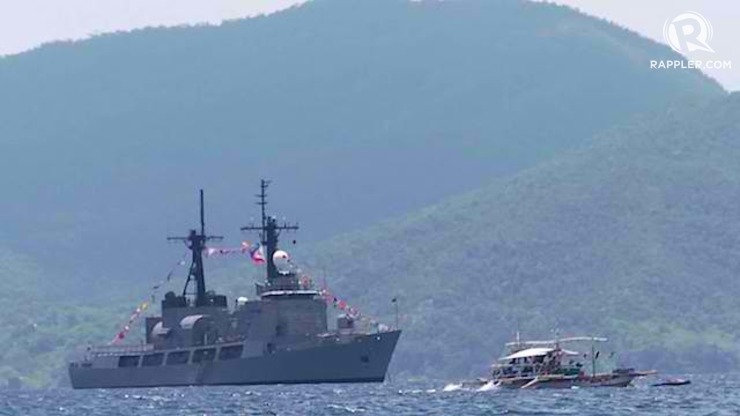From the Daily Tribune (Aug 17):
IS threat ‘growing’ in SE Asia
Support for the Islamic State, formerly known as Islamic State of Iraq and the Levant (ISIL), apparently is growing in Southeast Asia following reports of hardline Muslim guerrillas in the Philippines pledging allegiance to the extremist jihadists who now control large swathes of Iraq and Syria and the killing of one militant of the IS and the arrest of seven alleged terrorists arrested in Indonesia.
In Bali, police arrested six men and shot one of them in a raid on a rented house in Banyumas regency, Central Java last Friday, according to the Jakarta Post.
Earlier reports had said six suspected terrorists had been arrested in East Java, with weapons and explosives confiscated from them.
The Indonesian government has recognized IS as a terrorist organization and banned its propaganda in the state. But according to local police, at least 60 extremists from Indonesia took part in the fighting in Syria on the side of IS. Their return to homeland increases the terrorist threat in Indonesia.
In Manila, clips have been been uploaded in recent weeks on the video sharing site YouTube showing both the Mindanao-based Bangsamoro Islamic Freedom Fighters (BIFF) and the Abu Sayyaf rebels pledging support to the IS.
“We have an alliance with the Islamic State and Abu Bakr al-Baghdadi,” BIFF spokesman Abu Misry Mama told Agence France Presse by telephone last Friday, referring to the brutal jihadist group’s leader.
He confirmed that a YouTube video uploaded last Wednesday, showing a purported BIFF leader flanked by armed men reading a statement of support for the IS, had come from his group.
BIFF split in 2008 from the Moro Islamic Liberation Front (MILF).
Misry, however, said his group had no plans to impose the radical IS brand of Islam in the Southeast Asian nation.
Beheadings, mass executions and the taking of child brides have marked the IS campaign across large parts of Iraq and Syria.
He stressed said his group had not sent any of its fighters to help the IS, nor was it recruiting people to join the IS.
“But if they need our help, why not?” he added.
A purported Abu Sayyaf video has also been uploaded on YouTube showing one of the group’s most senior leaders, Isnilon Hapilon, mentioning al-Baghdadi as he read out a statement that pledged allegiance to the IS.
He was filmed linking arms with more than a dozen men, some with faces swathed in fabric, as they stood at a forest clearing to pray and listen to his statement.
The IS is a Sunni group that has been fighting in Syria and launched an offensive in Iraq in June. The group has taken over large parts of the country, with a goal of seizing Baghdad. The group has also announced the establishment of a caliphate on the Iraq-Syria border.
But the United Nations Security Council unanimously adopted a resolution yesterday aimed at weakening Islamists in Iraq and Syria with measures to choke off funding and the flow of foreign fighters.
It represents the most wide-ranging response yet by the top UN body to the jihadists who now control large swaths of territory in both countries and have been accused of atrocities.
The British-drafted measure also placed six Islamist leaders — from Kuwait, Saudi Arabia and other nations — on the al-Qaeda sanctions list, which provides for a travel ban and assets freeze.
The six include senior al-Qaeda leaders who have provided financing to the al-Nusra Front in Syria and Abu Mohammad al-Adnani, the spokesman for the IS.
British Ambassador Mark Lyall Grant noted that the 15-member council had shown “strong unity” in adopting the resolution to address the IS and Al-Nusra threat.
“We have watched with horror their brutal actions — attempts to wipe out entire communities on the basis of their religion or belief, indiscriminate killing, illegal and savage executions, deliberate targeting of civilians and appalling levels of sexual violence, especially against women and children,” he said.
The resolution was endorsed by all 15 members of the council, including Russia, whose backing for Syrian President Bashar al-Assad partly stems from concerns that his downfall could lead to Islamists ruling Damascus.
The resolution demands that IS fighters in Iraq and Syria, rebels from the al-Nusra Front in Syria and other al-Qaeda-linked groups “disarm and disband with immediate effect.”
It “calls on all member states to take national measures to suppress the flow of foreign terrorist fighters” to the extremist groups and threatens to slap sanctions on those involved in recruitment.
The measure also warns governments and entities that trade with the jihadists, who now control oil fields and other potentially cash-generating infrastructure, “could constitute financial support” that may lead to sanctions.
The crisis in Iraq has prompted the United States to launch air strikes and air-drop food and water to help tens of thousands of civilians fleeing the militants’ advance in fear for their lives.
France has agreed to send weapons to shore up Kurdish forces fighting the Islamists and Pope Francis has urged the UN to do everything it can to stop attacks against Christian and other religious minorities who have taken flight.
“Stories that have emerged from ISIL’s bloody wake are the stuff of nightmares,” US Ambassador Samantha Power told the council.
“This is the new front of the terrorist threat, and one with a devastating human cost.”
Describing the jihadists as a threat to international peace and security, the council has placed the resolution under chapter VII of the UN charter, which means the measures could be enforced by military force or economic sanctions.
But Russian deputy ambassador Petr Iliichev stressed that the resolution “cannot be seen as approval of military action.”
In the resolution, the council accuses the jihadists of a series of atrocities and warns that they may constitute crimes against humanity.
The council has previously adopted statements condemning the IS offensive but the resolution makes the first attempt at a broader response, two months after IS fighters seized control of the main northern city of Mosul.
“This group needs to be defeated,” said Iraqi Ambassador Mohamed Ali al-Hakim, who stressed the need for all countries to follow up on the resolution.
Syria’s Ambassador Bashar Jaafari welcomed the measure, saying the regime in Damascus had repeatedly warned of the Islamist threat and asserting that the Assad government was a “necessary partner in the fight against terrorism.”
The United Nations is also backing Iraq’s prime minister-designate Haidar al-Abadi and his bid to form a broad-based government that officials hope will be able to confront the IS “terrorist army.”
http://www.tribune.net.ph/headlines/is-threat-growing-in-se-asia





